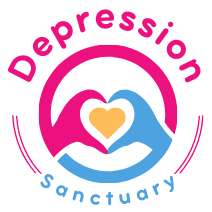Depression is a mental health condition that can affect anyone at any point in their life. While it can be challenging to understand the importance of mental well-being, it is critical to acknowledge different types of depression to differentiate them from everyday feelings of sadness. Depression can manifest in varying ways and can be classified into different subtypes. In this article, we’ll explore the most common types of depression and how they present themselves.
Major depressive disorder: Major depressive disorder (MDD) is one of the most common types of depression, affecting millions of people worldwide. This type of depression is characterized by persistent feelings of sadness or emptiness that last for at least two weeks. Other symptoms include:
- Loss of interest in previously enjoyed activities
- Feelings of worthlessness
- Fatigue
- Difficulty sleeping or oversleeping
- Suicidal thoughts
Persistent depressive disorder: Persistent depressive disorder (PDD), also known as dysthymia, is a chronic form of depression that lasts for at least two years. People with PDD typically experience symptoms similar to MDD but with less severity. Some people with PDD may have periods of mild or moderate mood improvement, but their overall mood remains consistently low.
Seasonal affective disorder: Seasonal affective disorder (SAD) is a type of depression that emerges at certain times of the year, usually during the winter months when there is less daylight.
Symptoms typically include:
- Low energy,
- Appetite changes,
- Weight gain,
- Difficulty sleeping or oversleeping,
- Irritability
- Difficulty concentrating
Bipolar disorder: Bipolar disorder is a condition characterized by episodes of depressed mood and periods of elevated or manic mood.
When someone with bipolar disorder is in a manic episode, they can experience several symptoms, including:
- Being overly talkative
- Having racing thoughts
- Experiencing irritability
- Engaging in risky behavior,
- Exhibiting poor judgment.
During a depressive episode, they will typically exhibit symptoms similar to people with MDD, but their mood and energy levels can fluctuate significantly.
Postpartum depression: Postpartum depression (PPD) is a form of depression that affects new mothers within the first year of childbirth. Symptoms include:
- Overwhelming sadness
- Fatigue
- Feelings of guilt or worthlessness
- Difficulty bonding with the baby
- Diminished interest in activities previously enjoyed
Psychotic depression: Psychotic depression is a rare but severe form of depression that often includes symptoms of psychosis. People with psychotic depression may experience hallucinations or delusions, along with other depressive symptoms such as sadness or emptiness, loss of interest in activities, and changes in sleep and appetite.
It’s essential to note that just because someone exhibits symptoms similar to one of these types of depression does not necessarily mean they have a diagnosis. Depression can be nuanced and complex, often requiring professional help to diagnose and treat properly. It’s also common for people to experience a combination of these types of depression or other underlying mental health conditions, such as anxiety or personality disorders.
Understanding the different types of depression can help individuals recognize symptoms in themselves or others and seek the appropriate treatment. If you or someone you know is experiencing depression, it’s essential to seek help from a qualified mental health professional. They can provide proper diagnosis, support, and treatment options to improve mental well-being and overall quality of life.
Annie Ingalls is a pseudonym for all articles published on this site that have been at least partially generated using AI. All articles are fact-checked by Nancy Schimelpfening, M.S., and edited as needed. Some supplemental content written by Nancy may be included, as well. Additionally, each article is run through a plagiarism checker to ensure that we are not inadvertently violating anyone’s copyright. If you feel that the AI bot has copied your work in any way, please contact us at contactus@depressionsanctuary.org and we will remove it right away.

